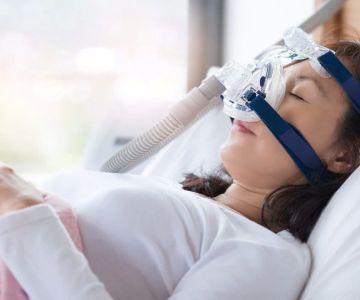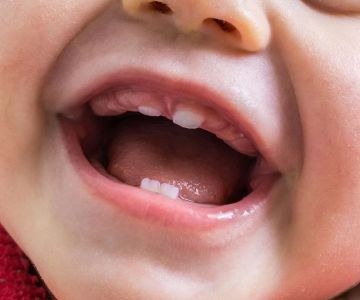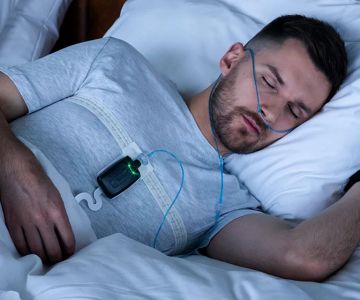What Are Oral Appliances for Sleep Apnea?
Oral appliances for sleep apnea are specialized dental devices or mouthpieces designed to keep your airway open during sleep. They are used to treat obstructive sleep apnea (OSA), a common sleep disorder where the upper airway becomes partially or completely blocked. These appliances work by repositioning your jaw or tongue, creating more space for airflow and preventing breathing interruptions that can disrupt your sleep and pose serious health risks.
Types of Oral Appliances
There are two main types of oral appliances used to treat OSA: mandibular advancement devices (MADs) and tongue-stabilizing devices (TSDs). MADs are the most common and work by pulling the lower jaw forward, which also moves the tongue forward, increasing the space in the back of the throat for better airflow. TSDs, on the other hand, use suction to hold the tongue in place and forward, opening the airway. Both types have their unique features and suitability depending on individual needs.
The Effectiveness of Oral Appliance Therapy
Custom-made oral appliances are often considered the most effective for treating OSA. While over-the-counter and "boil and bite" models can offer some benefits, research indicates that tailored devices provide superior results. Oral appliance therapy works by physically manipulating the position of the tongue and jaw to improve airflow and reduce the frequency of sleep disruptions caused by OSA.
Who Oral Appliances Are Best For
Oral appliances are ideal for individuals with mild to moderate OSA who have difficulty using a CPAP machine. CPAP is often the preferred treatment for improving airflow in sleep apnea, but some people find it challenging to use consistently. Oral appliances offer an alternative that can improve symptoms for many, although they may not be as effective as CPAP. Some people even combine the use of oral appliances and CPAP for enhanced results, such as using the appliance when traveling and the CPAP at home.
Who Shouldn't Use Oral Appliances
Oral appliances are not suitable for everyone. People with central sleep apnea, where breathing pauses are caused by signaling problems in the brain, cannot be treated with these devices. Children with breathing issues typically require different treatments, and the use of an oral appliance should only be based on the recommendation of a healthcare provider. Additionally, attempting to manage severe OSA with only an oral appliance can be dangerous, and it's crucial to follow the guidance of a healthcare provider regarding their safe and appropriate use.
Procedure Details for Obtaining an Oral Appliance
To get an oral appliance for obstructive sleep apnea, a sleep study is necessary to diagnose the condition. If an oral appliance is recommended by a sleep specialist, a referral to a dentist is required. The dentist will take an impression of your teeth or a 3D scan, send it to a manufacturer for a custom design, and fit you for the device during a return visit. They will also provide instructions on cleaning and caring for the appliance and may recommend a follow-up sleep test to assess its effectiveness. It usually takes about two to four weeks to adjust to wearing the appliance.
Risks and Benefits of Oral Appliance Therapy
In the initial weeks of using an oral appliance, short-term side effects such as increased salivation, jaw and teeth pain, dry mouth, and gum irritation may occur. However, these symptoms typically improve as you get used to the device. Long-term side effects are rare with a properly fitted appliance but can include changes in bite, teeth movement, or issues with the jaw muscles or temporomandibular joint. Regular dental check-ups are essential to monitor for any changes and ensure the device remains in good condition. The benefits of oral appliance therapy include improved OSA symptoms, deeper sleep with fewer disruptions, reduced or eliminated snoring, an alternative for those unable to use CPAP, and the convenience of being portable for travel.
Questions to Ask Your Healthcare Provider
When considering an oral appliance to treat obstructive sleep apnea, it's important to have a detailed conversation with your healthcare provider. Ask about the cost of the therapy and whether your insurance will cover it. Inquire about the number of visits required for fitting the appliance and the number of sleep tests needed. Also, discuss the potential side effects to watch for while using the device and how long it is likely to last.
Oral appliances for snoring and sleep apnea offer a promising solution for many individuals struggling with sleep disorders. They work by repositioning the jaw and tongue to open the airway, improving sleep quality and reducing the negative effects of sleep apnea. However, it's crucial to consult with a healthcare provider and dentist to determine if they are the right option for your specific condition and to ensure a proper fit and follow-up care.






 Westgate Dental Arts
Westgate Dental Arts Coventry Family Dental
Coventry Family Dental Familia Dental
Familia Dental Dr. Daniel S. Fife, DDS
Dr. Daniel S. Fife, DDS Dentistry At Suburban Square: Michael I. Wollock, DMD
Dentistry At Suburban Square: Michael I. Wollock, DMD Comfort Care Dental
Comfort Care Dental The Importance of Oral Health Education During Pregnancy for a Healthy Pregnancy
The Importance of Oral Health Education During Pregnancy for a Healthy Pregnancy Why Skipping Dental Checkups Can Lead to Bigger Oral Health Problems
Why Skipping Dental Checkups Can Lead to Bigger Oral Health Problems Advantages of Porcelain Dental Restorations
Advantages of Porcelain Dental Restorations Best Tips for Brushing Your Teeth Properly for Healthy Gums: Essential Techniques for Oral Health
Best Tips for Brushing Your Teeth Properly for Healthy Gums: Essential Techniques for Oral Health How Can Diabetes Cause Tooth and Gum Problems? Preventing and Managing Oral Health Issues
How Can Diabetes Cause Tooth and Gum Problems? Preventing and Managing Oral Health Issues Healthy Habits for Promoting Good Oral Health and Hygiene: Tips for a Healthy Smile
Healthy Habits for Promoting Good Oral Health and Hygiene: Tips for a Healthy Smile